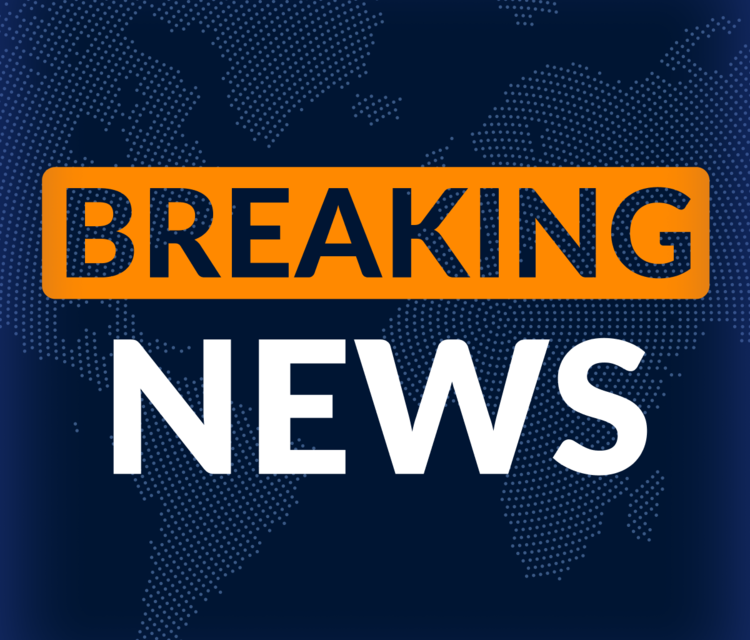US Federal Reserve (Fed) Chair Jerome Powell said that they will adopt a new policy framework of flexible inflation targeting and eliminate ‘makeup’ strategy for inflation, while delivering a speech on “Economic Outlook and Framework Review” at the annual Jackson Hole Economic Symposium.
Powell speech at Jackson Hole Symposium, key takeaways
“Framework calls for balanced approach when central bank’s goals in tension.”
“Prior framework’s emphasis on overly specific set of economic conditions may have led to some confusion.”
“Framework removes language indicating zero-lower-bound is a defining feature of economy.”
“New framework designed to work in a range of economic conditions.”
“Idea of intentionally moderate inflation overshoot proved irrelevant.”
“New framework emphasizes commitment to act forcefully to ensure longer-term inflation expectations remain well-anchored.”
“Fed still believes it may not need to tighten policy solely based on uncertain estimates that employment may be beyond its maximum sustainable level.”
“Shortfall language in previous statement posed communications challenge, and is removed in new framework.”
“Preemptive action likely would be warranted should tight labor market pose risk to price stability.”
“Shifting balance of risks may warrant adjusting policy stance.”
“Stablity of unemployment rate allows fed to ‘proceed carefully’ as we consider changes to policy stance.”
“Risks to inflation tilted to upside, risks to employment to the downside.”
“Fed’s goals are in tension, must balance both sides of Fed’s mandate.”
“Downside risks to labor market rising.”
“GDP growth has slowed notably, reflecting slowdown in consumer spending.”
“Latest data indicates 12-month PCE inflation rose 2.6% in July; core rose 2.9%.”
“Effects of tariffs on consumer prices now clearly visible, expect effects to accumulate in coming months.”
“Reasonable base case is inflation effects of tariffs will be short-lived.”
“Possible that tariff-driven upward pressure on prices could spur lasting inflation dynamic, but unlikely, given downside risks to labor market.”
“Cannot allow one-time increase in price level to be ongoing inflation problem.”
“Tighter immigration has led to abrupt slowdown in labor force growth.”
“Slowdown in job growth has not opened up large margin of labor market slack, which we want to avoid.”
“Labor supply has softened in line with demand, ‘breakeven’ job growth is down sharply.”
“Labor market in ‘curious’ kind of balance.”
Market reaction to Fed Chair Powell speech at Jackson Hole Symposium
The US Dollar came under selling pressure with the immediate reaction. At the time of press, the US Dollar Index was down 0.45% on the day at 98.18.
US Dollar Price Today
The table below shows the percentage change of US Dollar (USD) against listed major currencies today. US Dollar was the weakest against the Australian Dollar.
| USD | EUR | GBP | JPY | CAD | AUD | NZD | CHF | |
|---|---|---|---|---|---|---|---|---|
| USD | -0.54% | -0.55% | -0.47% | -0.24% | -0.63% | -0.49% | -0.52% | |
| EUR | 0.54% | 0.03% | 0.03% | 0.33% | -0.15% | 0.06% | 0.05% | |
| GBP | 0.55% | -0.03% | 0.02% | 0.29% | -0.18% | 0.04% | 0.01% | |
| JPY | 0.47% | -0.03% | -0.02% | 0.23% | -0.16% | -0.09% | -0.10% | |
| CAD | 0.24% | -0.33% | -0.29% | -0.23% | -0.46% | -0.26% | -0.28% | |
| AUD | 0.63% | 0.15% | 0.18% | 0.16% | 0.46% | 0.21% | 0.18% | |
| NZD | 0.49% | -0.06% | -0.04% | 0.09% | 0.26% | -0.21% | -0.03% | |
| CHF | 0.52% | -0.05% | -0.01% | 0.10% | 0.28% | -0.18% | 0.03% |
The heat map shows percentage changes of major currencies against each other. The base currency is picked from the left column, while the quote currency is picked from the top row. For example, if you pick the US Dollar from the left column and move along the horizontal line to the Japanese Yen, the percentage change displayed in the box will represent USD (base)/JPY (quote).
This section below was published at 09:00 GMT as a preview of Fed Chair Jerome Powell’s speech at the annual Jackson Hole Symposium.
- Fed Chair Jerome Powell is due to speak on monetary policy at the Jackson Hole Symposium.
- All eyes remain on Powell’s speech for fresh insights into the US interest-rate outlook.
- The US Dollar is set to rock with Powell’s speech influencing market pricing of Fed policy outlook.
US Federal Reserve (Fed) Chair Jerome Powell is scheduled to deliver a speech on “Economic Outlook and Framework Review” at the annual Jackson Hole Economic Symposium on Friday at 14:00 GMT.
Market participants will closely scrutinize Powell’s speech for any fresh hints on the trajectory of monetary policy, particularly about the timing of the Fed’s first interest-rate cut of the year and the potential scope and timing of subsequent rate reductions.
His words are expected to stir markets, injecting intense volatility around the US Dollar (USD), as the world’s most powerful central bank looks to steer toward a policy-easing path as early as September.
In the July policy meeting, the Fed left the federal funds rate unchanged in the range of 4.25%-4.50%, but two policymakers dissented, with Fed Governor Christopher Waller and Fed Governor Michelle Bowman voting in favor of a 25 basis points (bps) rate cut. In a statement published a few days after the July meeting, Governor Waller explained that he dissented because he saw tariffs as a one-time price event that policymakers should “look through” as long as inflation expectations remain anchored. Governor Bowman argued that slowing growth and a less dynamic labor market make it appropriate to begin gradually moving the moderately restrictive policy stance toward a neutral setting.
The US employment data for July, however, revived concerns over worsening conditions in the labor market and fed into expectations of an interest rate cut in September. Nonfarm Payrolls (NFP) in the US rose by 73,000 in July, while NFP increases for May and June were revised down by 125,000 and 133,000, respectively. On the other hand, the latest Consumer Price Index (CPI) and Producer Price Index (PPI) data from the US hinted at sticky inflation, casting doubt about the number of rate cuts the Fed could opt for in 2025.
Against this backdrop, the US Dollar (USD) faces a two-way risk in the run-up to the highly anticipated Jackson Hole showdown.
How could Powell’s speech at Jackson Hole affect the US Dollar?
Although markets widely anticipate a rate cut at the Fed’s next policy meeting, they seem unsure about whether the US central bank will go for two or three cuts this year. According to the CME FedWatch Tool, there is a 33% probability of a total of 75 bps reduction in rates in 2025, against a 47% probability of 50.
In case Powell emphasizes worsening labor market conditions and adopts a cautious tone on the growth outlook, the USD could come under selling pressure with the immediate reaction. On the flip side, the USD could gather strength against its rivals if Powell downplays the disappointing employment data and reiterates that they need more time to assess the impact of tariffs on inflation before easing the policy in a steady way.
Analysts at TD Securities think that Chair Powell will communicate the Fed’s lean towards easing in September at Jackson Hole and explain:
“Although there is still more data to come, we believe Powell will suggest that economic conditions support policy recalibration. Downside risks to the labor market have grown, while tariff passthrough into inflation appears slower and more manageable than previously expected.”
Eren Sengezer, European Session Lead Analyst at FXStreet, offers a brief technical outlook for the US Dollar Index (DXY):
“The Relative Strength Index (RSI) indicator on the daily chart moves sideways near 50 and the US Dollar (USD) Index fluctuates in a tight range at around the 20-day and the 50-day Simple Moving Averages (SMAs), reflecting a neutral stance in the near term.
“On the upside, the 100-day SMA aligns as a key resistance level at 99.00 ahead of 99.60-100.00 (Fibonacci 23.6% retracement of the January-July downtrend, psychological level) and 101.55 (Fibonacci 38.2% retracement). Looking south, support levels could be spotted at 97.50 (static level), 96.45 (end-point of the downtrend) and 95.50 (mid-point of the descending regression channel).”
Inflation FAQs
Inflation measures the rise in the price of a representative basket of goods and services. Headline inflation is usually expressed as a percentage change on a month-on-month (MoM) and year-on-year (YoY) basis. Core inflation excludes more volatile elements such as food and fuel which can fluctuate because of geopolitical and seasonal factors. Core inflation is the figure economists focus on and is the level targeted by central banks, which are mandated to keep inflation at a manageable level, usually around 2%.
The Consumer Price Index (CPI) measures the change in prices of a basket of goods and services over a period of time. It is usually expressed as a percentage change on a month-on-month (MoM) and year-on-year (YoY) basis. Core CPI is the figure targeted by central banks as it excludes volatile food and fuel inputs. When Core CPI rises above 2% it usually results in higher interest rates and vice versa when it falls below 2%. Since higher interest rates are positive for a currency, higher inflation usually results in a stronger currency. The opposite is true when inflation falls.
Although it may seem counter-intuitive, high inflation in a country pushes up the value of its currency and vice versa for lower inflation. This is because the central bank will normally raise interest rates to combat the higher inflation, which attract more global capital inflows from investors looking for a lucrative place to park their money.
Formerly, Gold was the asset investors turned to in times of high inflation because it preserved its value, and whilst investors will often still buy Gold for its safe-haven properties in times of extreme market turmoil, this is not the case most of the time. This is because when inflation is high, central banks will put up interest rates to combat it.
Higher interest rates are negative for Gold because they increase the opportunity-cost of holding Gold vis-a-vis an interest-bearing asset or placing the money in a cash deposit account. On the flipside, lower inflation tends to be positive for Gold as it brings interest rates down, making the bright metal a more viable investment alternative.







